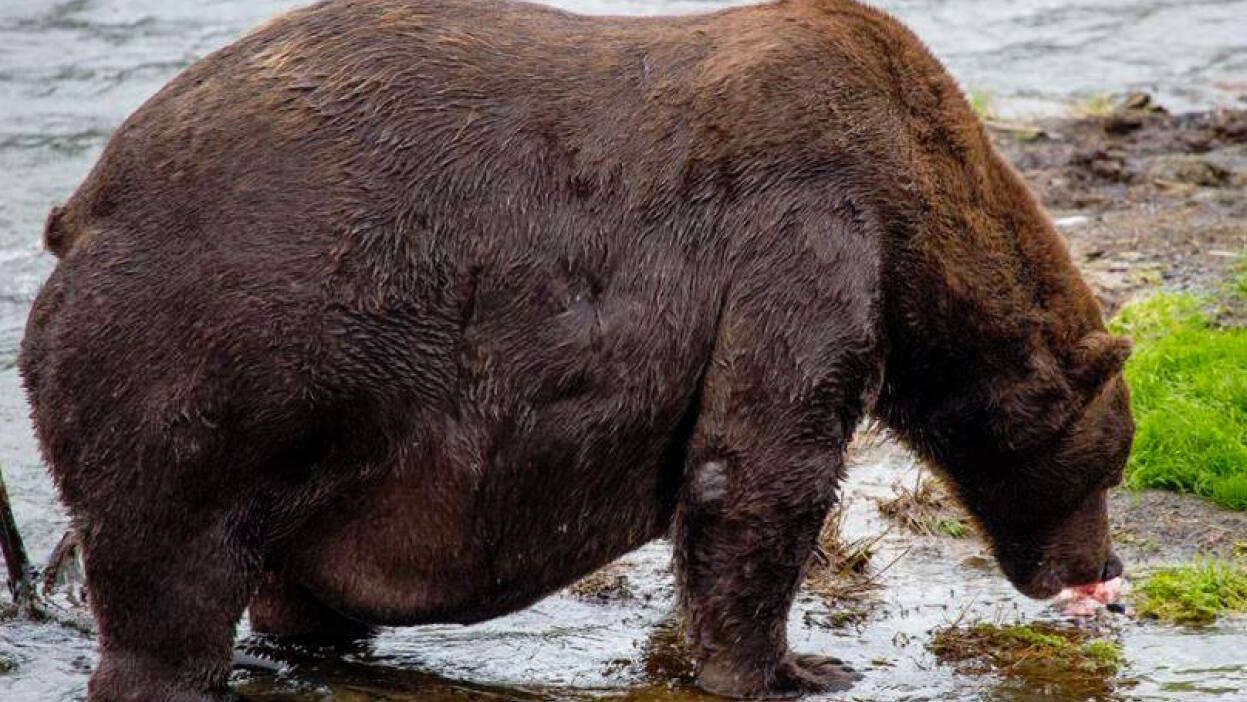
Alaska’s fat bears lose up to a third of their weight during their deep winter slumber.
They often appear in spring or early summer looking relatively gaunt. But the live streaming explore.org wildlife cameras in Katmai National Park and Preserve recently spotted the aptly-numbered bear 747 (a number randomly assigned by park biologists) returning to the river in hulky form.
“Did 747 ‘BEARFORCE ONE’ even hibernate?” explore.org tweeted.
As the clips below show, bear 747 — a large dominant male bear — doesn’t look like he’s been deprived of 4,500-calorie salmon since last year. Though he does have some fresh-looking wounds, telltale signs of a skirmish with another bear.
Bear 747’s robust appearance is a testament to his success in the harsh, wild bear world. He’s always one of the fattest, if not largest, bears on the Katmai cams, and was a recent winner of the park’s annual Fat Bear Week contest — which is a fall celebration of these thriving Alaskan animals.
A fat bear is a healthy bear. Ample fat stories give these bears better odds of surviving their winter hibernation (or “semi-hibernation”) and waking from hibernation in healthier shape, with energy to sleuth out food. Bear 747, however, shows profoundly successful survival skills. He exploits his size to control the best fishing spots, affording him bounties of fatty salmon throughout the summer. He enters the long winter famine at well over 1,000 pounds.
“He’s the fattest and largest bear I’ve ever seen.”
“He’s the fattest and largest bear I’ve ever seen,” Mike Fitz, a former Katmai park ranger and currently a resident naturalist for explore.org, told Mashable in 2020. “I feel a special bit of privilege to witness a bear as big as he.”
Last year, bear 747 used his size and skill to displace the once indomitable bear 856 from the top fishing spots, and the top of the bear cam hierarchy.
